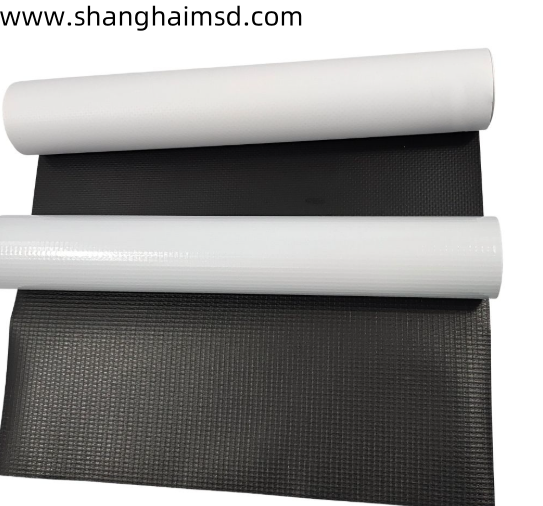A step-by-step guide for human hair wigs covering daily care, cleaning, styling, storage, and common pitfalls

1. Daily Wearing & Gentle Handling
- Putting on/taking off: Always hold the wig by its cap edges (not the hair strands) when positioning it on your head or removing it. If using wig clips or combs (built into the cap), fasten/unfasten them gently to avoid pulling the cap or hair.
- Avoid excessive touching: Refrain from constantly running your fingers through the wig, as natural oils from your hands can transfer to the hair and weigh it down over time.
- Minimize friction: When sitting, avoid resting the wig against rough fabrics (e.g., woolen scarves, coarse sweaters) that can cause tangles. If the wig shifts, adjust it by the cap, not the hair.
2. Regular Brushing & Detangling
- Tools to use:
- A wide-tooth comb (for wet hair or heavy tangles) to avoid pulling strands.
- A soft-bristle wig brush (or boar-bristle brush) for dry hair—its gentle bristles smooth the hair without causing static or breakage.
- Avoid plastic brushes (they create static) or fine-tooth combs (they can snag and break hair).
- Brushing technique:
- Start from the ends of the hair (not the roots) and work upward slowly—this prevents tangles from “traveling” up the strand and causing breakage.
- For long wigs, section the hair into 2–3 parts (e.g., top, middle, bottom) to brush more thoroughly without overwhelming the wig.
- If you encounter a tight knot, hold the hair above the knot (to reduce tension on the cap) and gently tease it apart with a wide-tooth comb—never yank.
3. Washing: Frequency & Step-by-Step Process
- How often to wash:
- If worn daily: Every 7–10 days.
- If worn occasionally (1–2 times/week): Every 2–3 weeks.
- If exposed to heavy humidity, sweat, or styling products: Wash sooner (these can build up and make hair dull).
- Supplies needed:
- Sulfate-free, paraben-free shampoo (sulfates dry out human hair and damage the wig cap).
- Hydrating conditioner (avoid heavy, oil-based formulas that weigh hair down).
- A clean, soft towel (microfiber towels are ideal—they reduce friction).
- A wig stand or mannequin head (to air-dry the wig in shape).
- Washing steps:
- Pre-brush: Gently detangle the wig with a wide-tooth comb before washing—wet hair is more fragile, and tangles will worsen if not removed first.
- Prepare water: Fill a basin or sink with lukewarm water (30–40°C/86–104°F)—hot water damages the hair cuticle and fades color, while cold water won’t lather shampoo properly.
- Shampoo gently: Add a small amount of shampoo (1–2 teaspoons) to the water and swish to mix. Submerge the wig cap-side down (so the hair hangs freely) and gently squeeze the cap and hair—do NOT rub, twist, or scrub (this causes tangling and cap damage). Let it soak for 3–5 minutes.
- Rinse thoroughly: Rinse the wig under lukewarm running water (again, cap-side down) until all shampoo is removed—residue causes dullness and itchiness.
- Condition (optional but recommended): Apply a small amount of conditioner to the mid-lengths and ends (avoid the cap and roots—conditioner can loosen the knots that hold hair to the cap). Let it sit for 2–3 minutes, then rinse thoroughly with lukewarm water.
- Dry gently: Pat the wig with a soft towel to remove excess water—do NOT wring or twist (this stretches the hair and cap). Avoid rubbing the hair against the towel (use blotting motions instead).
4. Drying: Air-Dry is Best
- Shape while drying: Place the damp wig on a wig stand or mannequin head (adjust the size to match your head circumference so the cap doesn’t stretch). Gently arrange the hair (e.g., smooth the top, shape the ends) to help it dry in its natural style.
- Avoid direct heat/sunlight: Do not dry the wig near heaters, hair dryers, or in direct sunlight—heat causes the hair to become brittle, and sunlight fades color.
- Speed up (if needed): If you’re in a hurry, use a hair dryer on the cool setting and hold it 30–40cm (12–16 inches) away from the hair. Keep the dryer moving to avoid concentrating heat on one area.
5. Styling: Safe Practices for Heat & Products
- Heat protection first: Always apply a heat protectant spray (designed for human hair) to the wig before using hot tools—this creates a barrier against heat damage.
- Control the temperature: Set heat tools to 180–200°C (350–390°F) maximum. Higher temperatures (e.g., above 230°C/450°F) will burn or melt the hair cuticle, leading to permanent damage.
- Avoid frequent heat styling: Limit heat use to 1–2 times per week. For daily styling, use heat-free methods (e.g., foam rollers for curls, hair oil for smoothness).
- Choose gentle products: Use lightweight, water-based styling products (e.g., mousse, hairspray) instead of oil-based ones (e.g., pomades, heavy serums)—oil builds up quickly and is hard to wash out, making the wig look greasy.
6. Storage: Keep It Shape & Dust-Free
- Short-term storage (1–2 days): Place the wig on a wig stand or mannequin head to maintain its shape. Cover it with a breathable wig cap or a clean, loose cloth to keep out dust.
- Long-term storage (weeks/months):
- Wash and fully dry the wig first (storing damp hair causes mold or mildew).
- Brush it gently to remove tangles.
- Place it in a breathable storage bag (e.g., a cotton pillowcase or a specialized wig storage bag)—avoid plastic bags (they trap moisture).
- Store the bag in a cool, dry place (e.g., a closet shelf)—avoid humid areas (like bathrooms) or direct sunlight.
7. Common Mistakes to Avoid
- Using regular hair products: Shampoos, conditioners, or styling products with sulfates, alcohol, or harsh chemicals will dry out the wig and shorten its lifespan. Always choose products labeled “safe for human hair wigs.”
- Sleeping in the wig: Friction from pillows and movement during sleep causes severe tangling, breakage, and cap damage. Remove the wig before bed.
- Coloring or bleaching at home: Human hair wigs can be dyed, but this requires expertise—home dye jobs often result in uneven color, damage, or fading. If you want to change the color, take the wig to a professional stylist who specializes in wig care.
الأقسام
إقرأ المزيد
For travelers based in or around New York, the Air France New York City office is an essential destination for expert travel assistance. Whether you’re planning a trip, modifying your itinerary, or seeking support for a special request, the Air France Office in New York offers professional, in-person customer service to ensure your journey goes smoothly. This guide explores...

PVC Flex Banner printing plays a critical role in creating vibrant visual displays that attract attention in outdoor and indoor advertising. Choosing the right printing techniques and preparation processes is essential for producing clear, colorful, and durable banners. At shanghaimsd, we provide PVC Flex Banner materials designed to work well with a variety of printing methods to support...

Home transforming is more than simply an aesthetic improvement—it’s an investment in comfort, functionality, and long-time period price. In Katy, Texas, the demand for top class home changes has been steadily rising, pushed by a community that values both cutting-edge design and personalized residing spaces. Whether it’s a complete-scale renovation or focused updates like rest...

"Executive Summary Canada Emergency Medical Services Market : CAGR Value Data Bridge Market Research analyzes that the Canada emergency medical services market is expected to reach the value of USD 853.42 million by 2029, at a CAGR of 6.3% during the forecast period. A credible Canada Emergency Medical Services Market report provides with the relevant information about the niche...

Choosing the right UTM testing machine is a critical decision for any laboratory, manufacturing unit, or research facility involved in material strength testing. Whether you're testing metals, polymers, composites, or textiles, a Universal Testing Machine (UTM) ensures your materials meet performance and safety standards. However, the selection process can be overwhelming due to the wide range...



